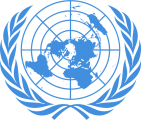
Fostering debt sustainability by addressing gaps in the sovereign debt architecture,
Statement by Hon. Shehan Semasinghe, State Minister of Finance
18th April 2023, 1200 hrs, ECOSOC Chamber
Thank you for the opportunity to participate in this panel discussion and share with you Sri Lanka’s experience on debt sustainability which I am sure would provide you with the space to contemplate how gaps in the sovereign debt architecture can be addressed. Sovereign debt restructuring as we all know is a complex mechanism involving the national government, international creditors, and various third parties, principally the IMF.
Sri Lanka is currently addressing an unsustainable debt and a balance of payments crisis, which is having a negative impact on growth and on poverty alleviation. Growth and poverty reduction had slowed down in the last five years. A restrictive trade regime, weak investment climate, episodes of loose monetary policy and an administered exchange rate of the capital account which covers the administration of direct investment, foreign credit and debt, securities investment and capital transfers had contributed to external imbalances.
Sustained fiscal disparities, driven primarily by low revenue collections, combined with tax cuts in 2019, had contributed to high fiscal deficits, large gross financing needs, and a rapid growth in unsustainable debt. Sri Lanka lost access to international financial markets in 2020, after credit rating downgrades. This severe forex liquidity constraint was felt across the economy, particularly from the second quarter of 2022. Amid depleted reserves, Sri Lanka announced an external debt service suspension in April 2022 and later appointed legal and financial advisors to support debt restructuring.
As you know Sri Lanka, is currently undergoing a debt restructuring process, within a framework comprising of a Special Creditor Coordinator Committee, which we hope to conclude successfully with the support of a multitude of stakeholders including the official and commercial creditors. This is an opportune time for a country to be introspective about the question of debt and in particular debt structuring. The Extended Fund Facility provided after negotiations with the IMF has provided us reasons for optimism. We are now in the process of assessing options in consultation with our bilateral and multilateral partners.
We are aware about the concept of State-contingent debt instruments (SCDI), which reduces interest payments burden in recessions and provide fiscal space when a shock hits the economy.
It’s an instrument whose future payoffs depend on future states of the world its used in structuring sovereign debt, and its potential benefits in terms of debt sustainability that could emerge when sovereign debt is issued in state-contingent GDP-linked bonds or longer maturities.
The IMF has issued loans even in cases where it identified a high risk of over indebtedness, without demanding restructuring first.
In fact, as a borrower, Sri Lanka views favorably SCDI linked debt, given that it allows the country to link its servicing or debt repayments to match the country’s capacity to absorb such expenditures. We are aware that SCDI could be linked to GDP, inflation or some such indicator.
However, we are also realistic, that while it is early days, we are concerned about the level of uncertainty that such SCDI linked instruments carry and therefore its appeal or more specifically the lack of appeal to fixed income investors. Our concerns stem from the rational thinking process where the cost of financing could be a reflection of the level of uncertainty that a lender carries. This could therefore mean that borrowing costs as reflected in the increased interest rates may in effect be inimical to the borrower especially when such borrower is an emerging economy that really needs to minimize its cost of borrowing specially when done in foreign currency.
Hence the key to providing greater uptake we believe is to minimize the risks that SCDIs bring due to their inherent nature of uncertainty. Such risk mitigation could come in the form of availability of copious amounts of data on variables that has an impact on SCDIs. It will require an effort to share data and research amongst countries and also require an archiving of data which could be shared subsequently. Such processes could be facilitated within and between countries by multilaterals, not only in ensuring the availability of data but also in improving the capacities to extract and derive the required data. Cooperation and collaboration between countries, agencies such as Central Banks and other such institutions will be important in creating an environment that mitigates the risks associated. At the same time, so as to de-risk the SCDI linked instruments, if Multilaterals and such agencies are willing to provide the collaterals to back such instruments, lenders will be more prone to invest in such instruments. Hence the SCDI linked instruments, to be more popular, will require a significant multilateral effort.
I have shared with you in a summary, Sri Lanka’s experience. However, with 54 countries facing debt distress according to the UNDP, there is no one-size-fits-all model and solutions have to be tailor-made to fit into each context.
Every crisis also presents an opportunity to exploit. Therefore, it is time to take collective action to close longstanding gaps in sovereign debt and ensure reforms in the international financial architecture allowing countries to have greater fiscal space, so as to ensure that the vicious cycle of debt and default does not repeat itself.


